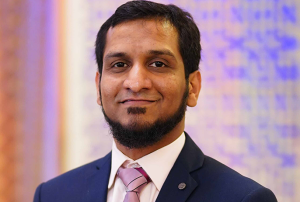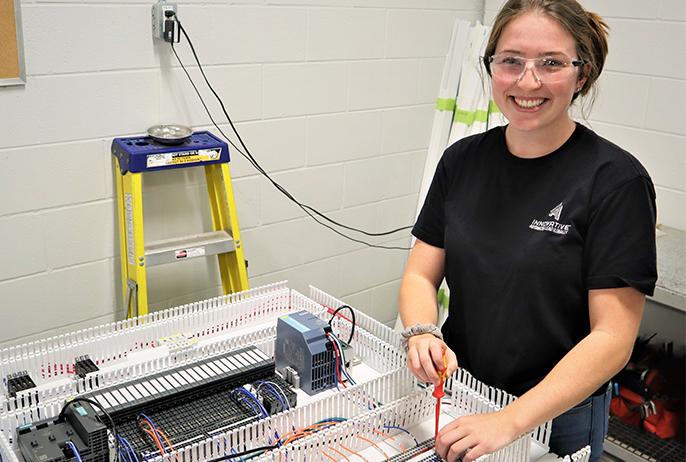Creating space age technology
 By Kari Klassen
By Kari Klassen
With the world becoming increasingly more dependent on smart devices, the importance of components that can be used by various devices and employed in a variety of applications, at the same time, cannot be overstated.
Imagine a smartphone, for example, with three different antennas for varying purposes. Its unwieldy design would likely render it dysfunctional.
“We can see the result of these innovations happening right in front of our eyes as the size of modern smart gadgets keeps reducing,” said Dr. Farhan Ghaffar, Assistant Professor in the Department of Electrical Engineering at Lakehead University and Lakehead-Georgian. Ghaffar’s research aims to make our technology more agile by creating adaptable components with multipurpose applications that are intelligent, while providing immense miniaturization.
“The research mainly focuses on the design of smart radio frequency components that can be used in a variety of applications such as autonomous vehicles, the Internet of Things (IoT), cellular communication, etc.,” Ghaffar said. “The fundamental idea of this work is to contribute to the infrastructure development of 5G and IoT communications.”
Ghaffar explains that easily reconfigurable components help in the miniaturization of wireless systems, while also reducing production costs.
“The heart of the research is a novel technology known as Frequency Microwave Substrate (FPMS) that has not been deeply investigated and can work as a platform for a variety of electronic systems and sub-systems. My team and I will try to find theoretical and practical models for this topic that can neatly answer the questions governing 5G communication.”
This work will find its application in various wireless technologies, but to provide an example that readers can more easily understand, Ghaffar points to the driverless car.
“In the near future humans aspire to replace the current automotive technology with self-driven or driverless cars that will be completely capable of maneuvering themselves once they know the final destination. These cars will follow all the rules of the road. They will come to a complete stop at a stop sign or a red traffic light. They will detect and follow the speed limits, and other traffic laws. The smart wireless sensors proposed in this research will be the eyes and ears of the driverless cars without which the concept cannot be materialized.”
Other than autonomous vehicles or driverless cars, modern applications such as mobile communications, aviation and space technology, and the health care system all rely on intelligent electronic systems that need component level agility and system level adaptability that meet their necessary requirements. Ghaffar believes the research on this fresh FPMS technology holds the answer to the challenges of all these wireless applications.
Ghaffar was awarded a National Sciences and Engineering Research Council (NSERC) Discovery Grant for his reconfigurability of microwave devices research. He is also a co-inventor on three international patents with application in the biomedical, automotive radar and manufacturing technology industries, with a fourth one filed in August 2020.


